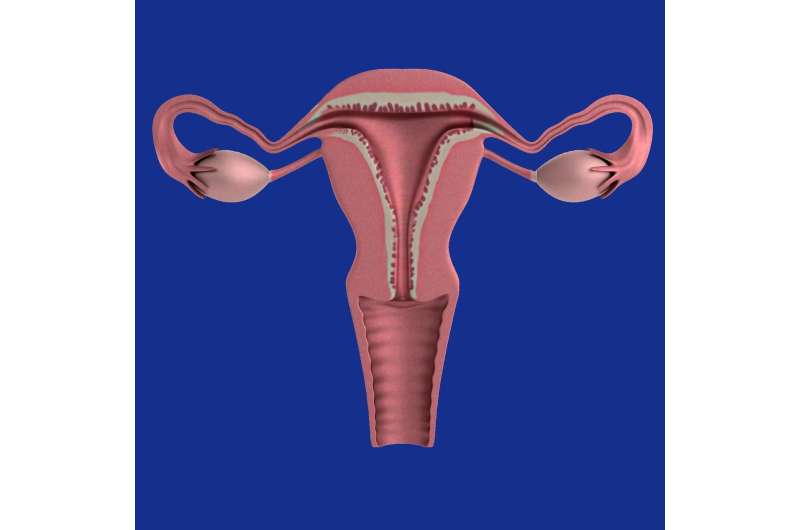
Many cancer treatments, such as chemotherapy or radiation therapy, can irreparably harm reproductive organs, leaving patients who hope to conceive a child after treatment with few options. Some can preserve their eggs or embryos, but those procedures are not available to everyone and not possible with certain cancers.
For more than two decades, Kutluk Oktay, professor of obstetrics, gynecology, and reproductive sciences and director of Yale’s Laboratory of Molecular Reproduction and Fertility Preservation, has been developing another option for those looking to preserve fertility. In 1999, he created the first ovarian transplant technique using cryopreserved tissue. With this method, ovarian tissue is removed from the patient, frozen until their cancer treatment is complete and then retransplanted, providing a new “window” of fertility and a chance at conception.
The procedure, known as ACOTT (autologous cryopreserved ovarian tissue transplantation), has continued to evolve. In a new study published in the journal Fertility and Sterility, Oktay and his research team report on improvements that can extend fertility and offer more flexibility for those who want to conceive children after cancer treatment.
The new method, called robot-assisted ACOTT, or RA-ACOTT, incorporates changes to the surgical procedure, a new way of handling the preserved ovarian tissue, and a pharmacological component. For the seven women who participated in the study, the improved approach led to at least four years of ovarian function on average, which is 14 to 18 months longer than was possible with the earlier technique. And at the time of publication, four of the women had attempted pregnancy, all of them successfully, resulting in six births.
In an interview with Yale News, Oktay discusses this new approach, what it means for people undergoing cancer treatment, and his plans for the method going forward. This interview has been condensed and edited.
Can you describe the main differences between the method you discuss in the study (RA-ACOTT) and the method it improves upon (ACOTT)?
Kutluk Oktay: We set out to improve ACOTT by doing a few things. One is using a human-derived extracellular matrix, which is used in other surgical fields, and we applied it to ovarian transplants. We use it as a scaffold, first sewing the ovarian tissue onto the scaffold and then transplanting it. The second innovation is the use of robotic surgery, which provides precision, gentler tissue handling, and increases the speed of the process. We also used a method of transplanting the ovarian tissue onto the remaining ovary [rather than the pelvic sidewall as in the first technique Oktay developed and others have been utilizing since] and added some pharmacological treatment, such as estrogen and baby aspirin, that we think benefits the healing process. So, when you combine the surgical innovations with the pharmacological interventions, you get improvement in methodology.
With older techniques of ACOTT, you’ve found that ovarian function lasts about 29 months, on average, and your new approach extends that to 43–47 months. What does that mean for the patients who receive these transplants?
Oktay: Because of the shortness of the function duration, we’ve always had performance anxiety with ovarian transplants. We would not transplant the tissue unless the patient was ready to have children. And we’d have anxiety about letting patients try to conceive on their own because we wouldn’t know when the graft would stop functioning; in most cases, we would do [in vitro fertilization], accumulate embryos, and put them aside just in case.
The limitation with ovarian transplants is you’re taking tissue that is maybe worth five years of reproductive life [meaning, in theory, if it had not been removed, it would yield five years of fertility]. But the tissue doesn’t last that long once transplanted because after you graft it back into the patient, it takes time for it to revascularize [or reincorporate blood vessels]. During that time, it lacks oxygen, and you lose two-thirds of the egg reserve in the tissue. With the innovations described here, we can close that gap. Then maybe we’ll feel more comfortable in transplanting as soon as a patient is cured so they start getting the benefits of hormone treatment. Or we’ll feel more comfortable letting patients try on their own to conceive. So, it’s going to give us more flexibility and patients a more relaxed approach to what they want to do with that tissue.
And you and your coauthors believe that this improved method is accelerating the revascularization process?
Oktay: Yes, I think our overall approach improves the revascularization process and, therefore, tissue survival. Some of the patients in this paper still have functioning tissue. If we had waited another year to publish, the differences between this method and previous approaches may have been even larger.
How have the women in this study responded to this approach?
Oktay: They’re ecstatic. And their oncologists are ecstatic with the success of this approach. They’re recommending it wholeheartedly to their patients.
What are the other options for women wanting to preserve fertility while undergoing cancer treatment?
Oktay: For postpubertal females, and adults who are single, do not prefer donor sperm, or embryo freezing, we can do egg freezing; otherwise for adult patients, we can do embryo freezing. These are established methods. But with many cancers there may not be sufficient time to use these techniques because ovarian stimulation takes about two weeks or so. On the other hand, ovarian tissue freezing can be done on the same day. The other day, I got a call from my department chair when he was in the operating room with a patient, and we set up the ovarian tissue freezing procedure within two hours.
What are some possible next steps in this research?
Source: Read Full Article






